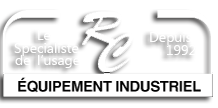Cantilever is a beam supported steel racking system, supported at one end. The loads are held in place by the arm which transfers the load weight to the supporting upright beam / base. Cantilever racking is designed to handle a wide variety of products providing unrestricted front access for long and irregular shaped products.
Products rest on flat or tapered arms for easy loading. The columns act as backstops and flue space for sprinklers and water penetration. Lift truck forks have easy entry for un-palletized loads. Base legs provide stability and keep the products off the floor. All posts are punched to accept arms on both sides. Cantilever arms make up the actual levels used for product storage. The arms are typically adjusted on the upright creating shelf levels, enabling you to customize the height required. Arms can be straight or inclined to hold goods that may roll off. Some arms come with a lip edge that attaches at the front end of the arm to prevent loads from slipping off the front of the rack, these edges can be welded on or peg style to be removed for loading / unloading.
There are 3 types of Cantilever Racking: Cant Bar, Cant Bolted and Cant Deck. Cantilever racking has also been referred to as T-racking as it can be used for T-Roof storage buildings. Cantilever Racking is an ideal structure to support a roof, protecting the products from the elements. The roofs can either cover the product only or with trusses cover the access aisles. Steel siding can be added to the sides and backs for added protection and rigidity. Movable face tarps can be added to fully protect the lumber or building materials. As an option the concrete floating slab can be placed under cantilever base legs only, and the aisles can be left as asphalt or gravel base.
Designed Uses: Lumber yards, oversize & long pallet or construction items such as steel tubing, drywall sheets, and large furniture items.
Source http://naseco.ca/cantilever-rack/systems.html
